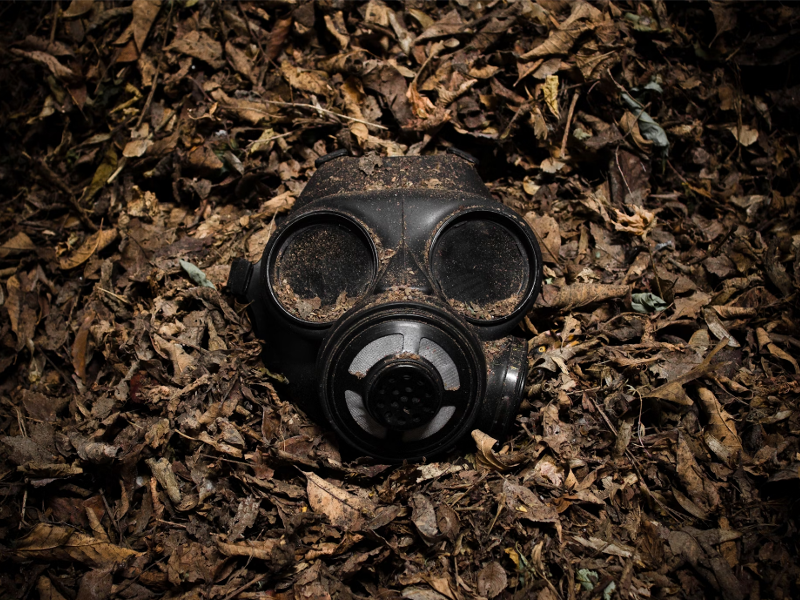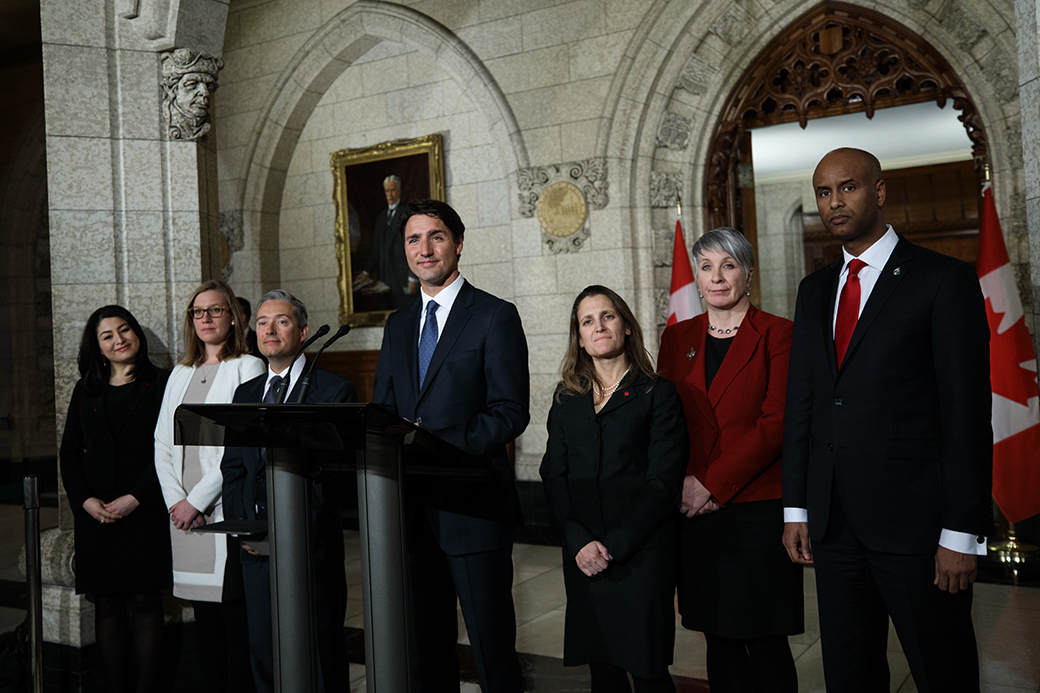Background
Recently, a series of letters to the editor published in the Toronto Star scolded the Canadian government for allegedly siphoning billions of dollars away from climate change mitigation initiatives in order to fund dubious military investments. These letters argue that the government should prioritize environmental investments over military spending, suggesting that climate change poses a greater threat to Canada than war, and that military expenditures are an economic black hole.
These letters rest on a false dichotomy and advance specious arguments. This article will highlight the salient flaws in these letters and demonstrate that Canada’s defence investments need not prevent it from tackling climate change head-on.
Argument 1: Climate Change Is a Greater Threat Than War
First, one letter claims that climate change is the biggest threat to international security at present, not war. Canadians already face extreme weather events: wildfires, droughts, heatwaves, and torrential rain. Some scientists attribute the severity of these events to climate change. War, in contrast, does not directly impact the lives of Canadians to the same extent at this point in time and appears much more theoretical.
Collectively, extreme weather events are causing billions of dollars in damages. Yet, a 2022 report found that Canada’s climate action plan is critically underfunded. The national government pledged to spend $48.6 billion for various climate change mitigation initiatives from 2015-2024. In actuality, it only spent $34.3 billion during that time period, resulting in a 30% funding shortfall of $14.3 billion.
Meanwhile, the federal government is planning to increase the current military budget from its current level of $36.7 billion annually, by $8.1 billion in the next five years, and $73 billion over the next twenty years.
In sum, the Canadian government has its priorities out of order, so this thinking goes. Climate change is an increasingly expensive and tangible threat to Canadians, yet the government seems determined, in the words of some, to “spend recklessly on destructive weapons for wars they will never fight.”
Rebuttal 1: War May Not Be Imminent, but There Are Warriors at Our Doorstep
Canada effectively shares a border with Russia in the Arctic and, as a result, must take seriously the responsibility of securing NATO’s northern flank against what the government itself calls “today’s most hostile nuclear power.” Since invading Ukraine in 2022, Russia has been building up and restoring many Cold War capabilities and bases in the Far North, prompting Canada’s allies to urge it to take a more active role in defending the region.
Thus, although torrential rain storms are already causing serious damage in Canada, the hypothetical downpour of Russian bullets and missiles has the capacity to be far more devastating if Canada fixates singularily on climate policy at the expense of other national security priorities.
Argument 2: Military Spending is a Narrow Investment
Second, the Star’s letters claim that Canada should reduce its military budget because those investments don’t produce any consumer goods. Comparatively, investments in infrastructure and research & development create consumer goods that create major savings for families and governments.
Every dollar spent on military equipment is a dollar not spent on the opportunity cost. Rather than using tax dollars to pay for destructive weaponry, these funds could be diverted towards civilian applications.
Rebuttal 2: Bold Conclusions Require Thorough Justification
The observation that defence investments don’t directly produce consumer goods does not necessarily mean that those investments should be stopped. The federal government should not discontinue or proceed with its investments solely based on the number of consumer goods those investments produce.
The fact is, defence spending provides a critical boost to the Canadian economy. A significant portion of the Department of National Defence’s (DND) budget is spent on personnel costs, which translate into broad and lasting economic benefits. For example, personnel spending funds service member salaries, military pensions, disability top-ups, and more. Collectively, these investments boost Canada’s economic activity and enable both civilian military DND members to pay for their mortgages, child care costs, and children’s tuition fees.
Canadians should not be misled into believing that defense spending only results in more guns, tanks, and missiles. In reality, the defence investments made by Ottawa fund important projects that produce generational benefits for our military and economic resilience.
Dual use technologies—innovations that have both military and civilian applications—are prime examples of the longlasting benefits of defence reserarch and development (R&D). The Internet and the Global Positioning System (GPS) are two services that started out as military projects, but eventually became widely used services across the globe, supurring advancements in medicine, egineering, AI, education, etc.
Competing or Converging Interests?
The consequences of climate change and national security threats should not be treated as mutually exclusive, even by those who favour greater defence spending. After all, global security is significantly affected by climate change. Extreme and volatile weather events compromise NATO troops, equipment, and critical infrastructure. The alliance operations in Iraq faced bouts of extreme heat—outdoor temperatures reaching 50°C—that hampered the ability of its personnel and equipment to function optimally.
Additionally, climate change can act as a threat multiplier by intensifying instability, geostrategic competition, insecurity, and conflicts around the world. Floods in South Sudan have displaced over half a million people and exacerbated widespread food shortages, economic insecurity, and violence in the southern regions. Similarly, severe seasonal droughts have amplified intercommunal violence, land scarcity, and resource competition in Kenya.
That being said, Canada and its allies are actively developing strategies to manage both contingencies simultaneously, effectively treating them as converging interests rather than competing ones.
NATO is actively developing and applying new emission reduction strategies to concurrently improve its operational effectiveness and mitigate climate change. In 2023, the alliance introduced the Greenhouse Gas Emissions Mapping and Analytical Methodology to assess its emissions and figure out how to reach its emission reduction targets.
NATO’s War on Climate Change
The relationship between climate change and Canada’s defence spending and obligations to NATO is simple: NATO’s central goal is to keep the world safe. Climate change is making the world less safe. Ergo, to fulfill its main goal, NATO must combat the effects of climate change.
NATO is determined to become a “leading international organisation [on] understanding and adapting to the impact of climate change on security.” The alliance is bringing together nations, industry partners, and international organizations to collectively develop innovative climate change mitigation technology and strategies.
NATO is also supporting civil preparedness and emergency response planning for environmental disasters abroad, primarily through its Euro-Atlantic Disaster Response Coordination Centre. Similarly, NATO member states are leveraging their defense investments to address domestic environmental disasters. In 2023, both Canada and Greece mobilized their militaries to combat wildfire outbreaks.
Conclusion
Ultimately, national security and climate change are not mutually exclusive issues; they are deeply intertwined and should be treated as such. Canadians must reject the misguided notion that the federal government’s efforts to meet NATO 2% of GDP defense spending target hinders our ability to combat climate change. Through its leadership of NATO’s new Climate Change and Security Centre of Excellence in Montreal, Canada will demonstrate how global security strategies can align with environmental sustainability.
Photo: “closeup photography of bong mask” (2017) by Scott Rodgerson via unsplash.com.
Disclaimer: Any views or opinions expressed in articles are solely those of the authors and do not necessarily represent the views of the NATO Association of Canada.





